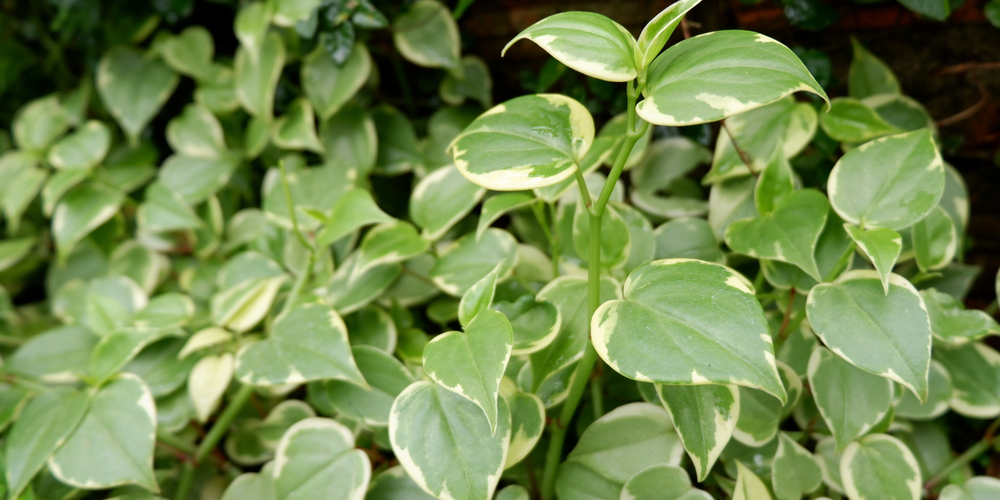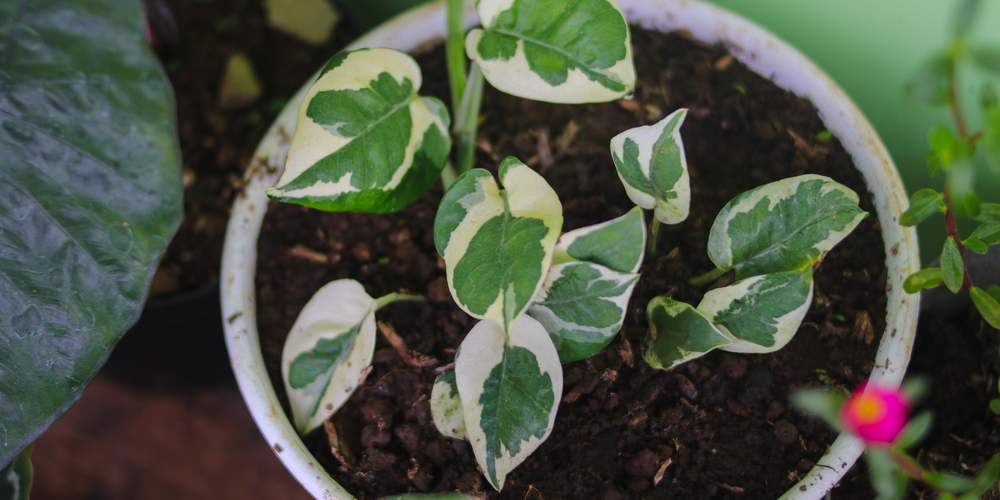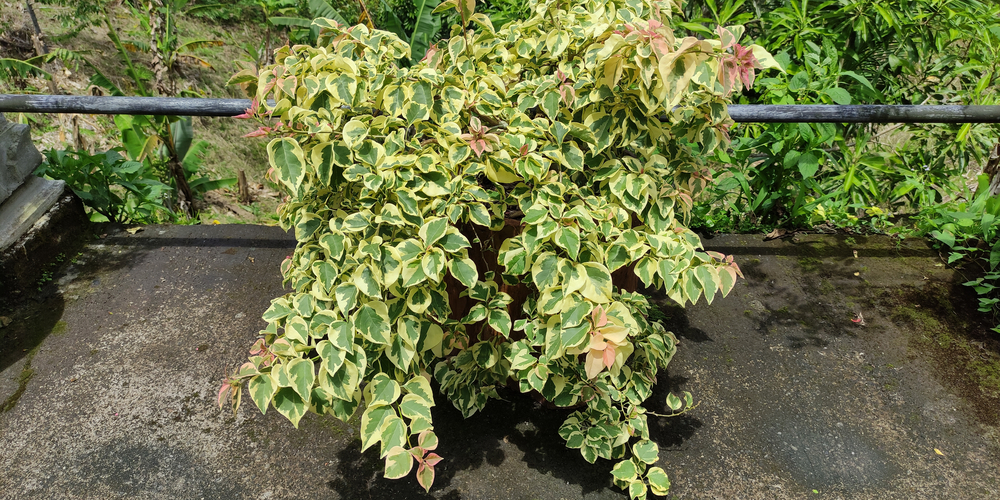Also known as Cupid peperomia, Peperomia Scandens is a delicate-looking vining house plant that grows well in hanging pots and containers. Its green foliage and natural climbing habit make it an attractive plant that performs well in most settings and adds a splash of color to the interiors.
To learn more about this plant, keep reading. Here, you’ll find everything you need to know to care for a thriving Cupid peperomia!

Botanical Name: Peperomia Scandens
Common Name: Cupid Peperomia
Plant Type: Perennial
Flower Color: Blooms are unique and rare. They appear as long, narrow green or brown stalks that don’t resemble flowers.
Size When Mature: About 12 inches
Bloom Time: Summer
Sun Requirements: Indirect Light
USDA Hardiness Zones: 10-12
Soil PH Range: 5.0 – 7.5
Soil Type: Well-draining and rich.
Water Needs: Medium (tolerant to drought but susceptible to overwatering, best to keep it moist)
Native Area: Caribbean, Mexico, and Central America.
What you Need to Know About Peperomia Scandens
Cupid peperomia takes its name from the cute heart-shaped leaves that characterize it. While it is not one of the easiest plants to grow, you can have it thriving in your home by following our tips.
The plant has thick and fleshy leaves that make it tolerant to drought when necessary. However, peperomias are tropical plants that need humidity to grow (more on this later).
Blooming indoors is a rare occurrence. But that doesn’t make it impossible. With proper care, under optimal conditions, you may be able to see them. Don’t expect your common flowers: peperomia produces long and narrow stalks that some people believe to “ruin” the plant’s appeal. For this reason, many decide to pinch the blooms off when they see them coming. If you are lucky enough to see peperomia’s flowers, you can handle them as you wish.
Luckily, these plants are not toxic, meaning you won’t have to worry about your pets (or kids) munching on your peperomia leaves.
How to Care for Peperomia Scandens
But what can you do to have thriving Peperomia Scandens in your home? Make sure you pay attention to this section to find out. As long as you provide these plants with what they need to survive, you won’t struggle to grow healthy peperomias.
Light
These plants grow best in bright but indirect light. Because of their native environment, the tropical forests of Central America, peperomias don’t do well under full direct sun.
Place your plants next to an east or north-facing window for best results. However, consider getting sheer curtains to protect it from sunburn if you can only place them in a south-facing location.
While your Peperomia might survive even in low-light conditions, with inadequate sunlight, you’ll notice a slower growth. Plus, you might see your plant looking dull and not as bright.
Water and Soil Needs
Peperomia Scandens loves humid environments. But because of its thick leaves, its water needs aren’t as high as other tropical plants. Consider misting your plant twice or three times a week to increase moisture around your plant.
Be consistent with how much you water peperomia. This plant is susceptible to under and overwatering. Ensure you add more water only when the soil is dry. Water your plant once every week or two weeks, depending on where you live.
Where temperatures are high, you might have to increase the watering frequency. Always feel the soil with your fingers to avoid making mistakes.
To reduce the risk of damaging your plant, you must choose a well-draining potting mix. Consider adding some mulch to increase water retention and improve the nutrient content.
Also, select a pot with drainage holes to avoid letting the plant’s roots sit in water. Use a mix of perlite and peat moss for best results.
The good news is that peperomias are not too picky about pH: optimal levels range between 5.0 and 7.5.
Temperature Requirements
You will have better chances to grow your Peperomia Scandens indoors: the ideal temperature ranges between 65 and 75F. This plant won’t survive through cold winters, so make sure your house temperatures are not too low. If you are growing it outdoors, don’t forget to protect your plant from harsh winds and avoid exposing it to conditions below 50F.
What USDA climate zone can it survive?
If you prefer planting your Peperomia Scandens outdoors, you must do so only if you live in the country’s warmer regions. Your plant will survive in the exterior in USDA hardiness zones between 10 and 12. However, make sure you protect it from the harsh sunrays of such regions.
Fertilizer
Contrary to other tropical plants, Peperomia Scandens doesn’t need much fertilizer. This plant is a light feeder that will do well if you fertilize it once a month during the spring and summer. Use a balanced product and prefer slow-release ones.
Common Diseases
With proper care, you’ll have little to worry about pests. This plant isn’t susceptible to many diseases. Too much or too little watering causes most of them, so keep an eye on your watering schedule. Also, avoid stressing your plant: it will make it more susceptible to attacks from pests and weaker.
To avoid infestations, regularly inspect your plant’s leaves. If you see spider mites, aphids, or mealybugs, take action as soon as you can to prevent infestations and limit the damage to your plant.
Peperomia Scandens Propagation
Peperomia Scandens are rare plants. The good news is that if you manage to have a thriving one in your house, you won’t have a hard time propagating it. The best method to add more peperomias around your home is by cuttings. Take a healthy stem with a couple of leaves from your mother plant. Dip it into rooting hormone before planting it in a well-draining potting mix or placing it in a vase with water. Depending on the method you choose, you’ll see roots appearing between three to four weeks. Don’t forget to keep your stems moist but not soggy!
How to Prune Peperomia Scandens
Peperomia can get bushy if left untouched. Pruning is not necessary but will help you maintain an attractive shape. Trim as much as you see fit, but avoid overdoing it to prevent causing too much stress to your plant.
Also, try to remove old and unhealthy-looking plants as soon as you notice them. Doing so will allow new growth to appear without competing for nutrients and water.
Related Article: Peperomia Hope Growth and Care Guide


